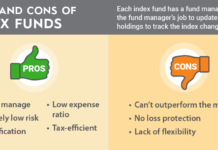What is peer to peer lending?
P2P lending is a system of direct loans between a borrower and a lender. These direct loans are managed through a peer to peer lending company which has a platform in the form of a website to administer this process. There are many p2p lending companies that offer different kinds of p2p loan investing opportunities, each type of p2p loan has a different risk profile and return.
Take a more detailed look at: What is peer to peer lending?
How to start investing in peer to peer lending?
Find out who are the main p2p lenders in the country you live in and learn more about what they offer.
As a general reference these are the largest p2p lenders:
- UK: Zopa and Rate Setter
- Europe: Mintos
- USA: LendingCLub and Prosper
See more reviews and interviews of the p2p lending companies:
Unbiased Reviews:
Interviews:
What are the risks of p2p lending?
P2P lending is not a bank account. There is a difference between saving and investing. Saving is money in a bank account covered by a depositor insurance scheme, investing is when capital is put at risk in exchange of returns. P2P lending is a form of investing. The main risks of peer to peer lending is the risk of default by the borrowers and default by the p2p platform.
The full risks and threats in peer to peer lending are highlighted here: What is peer to peer lending?
What is the difference between p2p lending and crowdfunding?
Crowdfunding is when a group of investors referred to as the crowdfund a startup or buy an asset. For example, Syndicate Room is a platform that allows investors to crowdfund startups. PropertyMoose and BrickOwner provide a platform on which investors can crowd fund properties.
Your first steps in peer to peer lending
First, choose the p2p platform of your choice:
This selection is based on your investment needs and the attributes of the financial platform.
See more: How to choose a p2p platform.
When you have chosen your p2p platform, learn how the p2p platform of your choice works:
These functions are common on most peer lending platforms:
- Register and send the relevant forms and documents.
- Make an initial deposit
- Make a small initial investment.
- Sell (part of) your test investment on the secondary market (if the p2p market exists)
- A small withdrawal
- Explore and learn about different loan types in terms of LTV (Loan to Value, Loan Term, Location, Loan Originator)
Explore the advanced options
- Auto investor
- Secondary market
For a more detailed look on how to proceed in your peer to peer investments see an example: Mintos for dummies (You can find good guidelines on how to test auto-Investors here)
Some Tips to new p2p lenders:
Do not invest all your funds immediately, even though it is very tempting to see your deposit earning interest. It is best to test out the p2p lending system over several days to understand the specific quirks of the system.
For example, some p2p lenders allow investors to register and deposit funds without sending the relevant documentation, however when an investor tries to withdraw these funds s/he is asked to fill in these forms. Sometimes this takes a few days to sort out. The withdrawal will not occur as fast as the user expected.
A few years ago when I was testing a platform called isePankur (now Bondora and this should not be taken as a recommendation of any sort), I invested in a loan with a 90-month loan term through a mistake in my auto investor settings. (The loan is still active today.)
It is best to allow yourself to make these mistakes with small amounts. Investing manually and with the minimum amounts will reduce the risk of mistakes with larger amounts. This will also be training to test and learn all the functions of the system, especially selling investments on the secondary market and making test withdrawals.
p2p lending is not the “set it and forget it” kind of investment; investors need to ….
Monitor p2p investments, the p2p space and the economy
The real world is changing, so are the situations of lenders, borrowers, p2p platforms, regulators and the economy. It is important for investors to monitor their p2p investments both to identify new opportunities and emerging threats. Their lending portfolio can only survive if they steer it in the right direction. Initially, this monitoring takes time, however after a while, this can be done before your second cup of tea is cold.
What kind of information helps p2p investors stay up to dateL
- General updates from the p2p lenders
- Specific updates on particular loans
- Monitoring secondary markets
- Keeping track of auto-investor purchased loans
- New p2p lenders on the scene
- P2P comments from government sources
- Special discounts or cashback offers
- Super Users of p2p platforms
Take a more detailed look on how to monitor you p2p investments
Investing significant amounts in one p2p platform is risky, spread your risk by using several p2p lenders.
Diversifying into other p2p platforms:
It is easy to diversify into stocks and equities through ETFs. With peer to peer lending, it is more time-consuming. Investors need to create separate accounts with each p2p lender and monitor them separately.
Diversification exposes investors capital across different risks. All p2p platforms have some core risks in common, and in addition to that, each platform has specific risks and opportunities. Diversification in the p2p space exposes the investors capital to different risks. (In theory) not all risks will materialise at the same time, and thus some parts of the capital will always be protected.
It is a chore to manage several different investment lending accounts, and there is no automatic solution to manage this effectively. There is no free lunch. P2P lending is not risk-free and monitoring risks is very important.
How much should an investor invest in p2p lending?
The total amount of money to invest in p2p lending is a delicate decision and depends on the investor’s particular personal and financial situation. While diversification reduces risk, it does not bring it down to zero. A decision on the total amount exposed to peer to peer lending needs to be taken according to a set of criteria.
Example criteria to decide the total amount to invest in lending investments:
- Investors age
- Average age in country of residence
- Other investments and their risk profile
- Risk of the investment portfolio
- Risk appetite of the investors
- Current economic environment
- Your future earning potential of the investor
- Financial education of the investor.
- Future financial commitments
Not all peer to peer lending has the same level of risk. Judging the level of risk that an investor can tolerate creates a win-win between the investor, borrower and lending platform.
This article explains how the investor’s financial situation can be compared with the financial attributes of a p2p platform.
See more: How to choose a p2p platform?
In conclusion investing in p2p loans requires learning new concepts and systems, these are not difficult to learn if you research, read and test the system.












